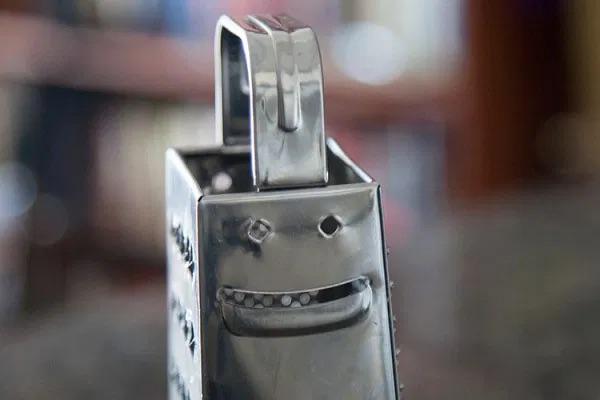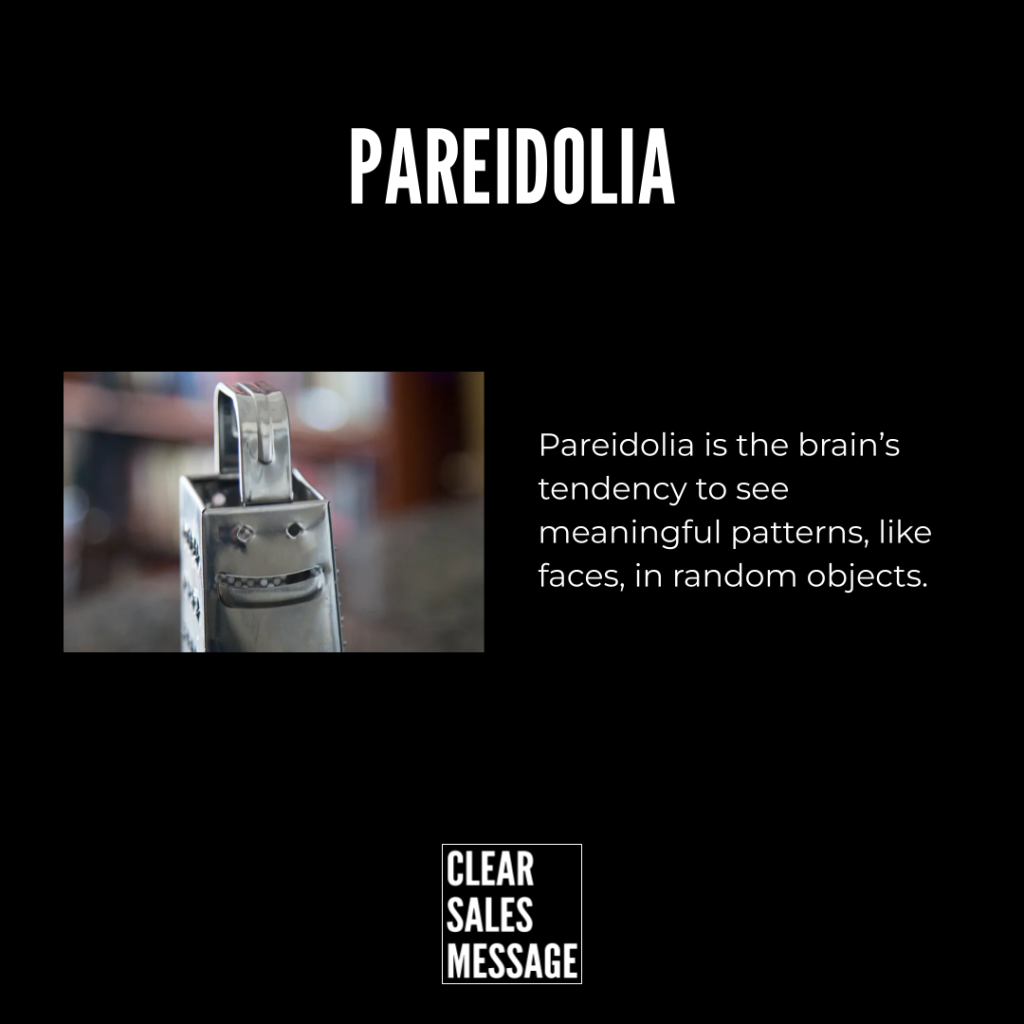Practical Sales Training™ > How People Work > Pareidolia
Pareidolia in Sales: What It Is, How It Works, and How to Use It
What Is Pareidolia?
Pareidolia is when your brain sees patterns—especially faces—even when none are really there. For example, you might see a face in a car’s front grille, or spot a shape in the clouds that looks like a dog.
In fact, this isn’t just your imagination. Your brain is wired to find patterns quickly. Long ago, early humans needed to spot faces and threats fast to survive. As a result, your brain developed the habit of seeing familiar shapes, even in random things.
Today, that same habit still runs in the background. That’s why you might see a face in toast or a figure in tree bark. It’s natural. And in sales, it’s useful.
How Pareidolia Works
Your brain loves patterns. It constantly looks for shapes and meaning to make sense of the world. One part of the brain, called the fusiform face area, helps you spot faces fast. However, it can sometimes go too far—seeing faces where none exist.
This is a form of apophenia. That’s when the brain finds meaning between things that aren’t really connected. For instance, you might hear a hidden message in white noise or think a song played backward says something secret. That’s pareidolia too, just with sound instead of sight.
Everyday Examples Include:
-
A smiling face in a power outlet
-
Shapes in clouds that look like animals
-
A tree trunk that resembles a person
-
Toast with a pattern that looks like a famous figure
These moments may seem random, but they happen often. And once you notice them, you can start using them.
How to Use Pareidolia in Sales and Messaging
Although pareidolia sounds scientific, it has real power in sales and marketing. When people see familiar shapes, especially faces, they pay more attention. Even better, they feel more emotionally connected.
Here’s how to use it in your brand:
1. Make Your Designs More Human
First, add subtle facial features to your product designs, logos, or packaging. A “friendly face” makes people trust you more. That trust can lead to more clicks, more sales, and stronger brand loyalty.
2. Create Shareable Content
Next, try using pareidolia images in your social media. For example, post a photo of a coffee spill that looks like a dog, or a cloud that looks like a heart. These types of posts grab attention, spark comments, and often go viral.
3. Build Emotional Connection
Moreover, when your marketing includes elements that feel familiar—like a face—people are more likely to remember you. They also feel more connected, which makes them more likely to buy.
4. Spark New Ideas
Finally, pareidolia helps unlock creative thinking. Writers, designers, and marketers can use it to see new possibilities. When you notice faces or shapes in unusual places, your brain starts thinking in new directions.
Why It Matters in Sales
-
Because people trust what feels familiar
-
Because faces trigger instant emotional response
-
Because pareidolia grabs attention naturally
-
And because you can use it without extra cost
When used well, pareidolia gives your message more emotion, clarity, and impact.
In Summary
Pareidolia is more than a quirky brain trick. It’s a tool you can use to stand out, build trust, and connect with people faster. Whether you’re designing a product, writing copy, or creating social content, a hint of pareidolia can make your message more human—and more effective.
Example

See also

Like this kind of stuff? Want more?
Then Practical Sales Training™ is for you…
Action focussed, affordable sales training
for entrepreneurs and small business owners.
Brought to you by James Newell

